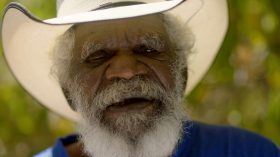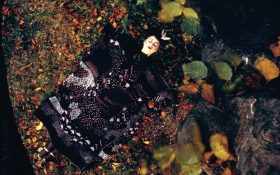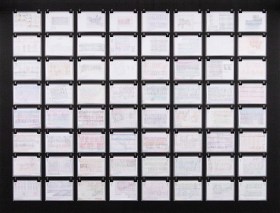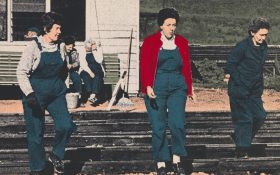Wayne Hudson, Black Princess (2013). Image by Kay Abude. Courtesy of the artist and Gallery Pejean, Launceston.
In his introductory essay for the House and Home exhibition on at the Margaret Lawrence Gallery, Victorian College of the Arts, Peter Timms grapples with the implications of the organising theme: ‘A house’, he says, ‘is not a home. A house is just a building; home is a state of mind.’ He argues that it is in reconnecting people, family and friends that home is truly meaningful.
Edward Howlett Spence in his article ‘The Philosophy of Home’ pursues this notion when he questions what home meant to Socrates. Was it his house, family, the city-state of Athens, Greece or perhaps the Agora where he spent most of his days debating ideas with the people of Athens? Through Plato’s dialogues we realise that Socrates’ idea of a house or home was something eternal, unseen and unchanging; home was ‘love.’ This idea was later taken up by the Christian Church as we see in John 14:2. Jesus says to his followers ‘In my father’s house are many mansions…’ Like the early philosophers, Jesus spoke of ‘heavenly paradise’, as being man’s real home not the ‘fleeting sights and sounds’ of material existence.
So are the terms ‘house’ and ‘home’ interchangeable? Edward Howlett Spence suggests that it is through the materiality of everyday objects that we are able to occasionally glimpse knowledge of the eternal, an idea that is engaged in the current exhibition. Curator Dr Malcolm Bywaters has brought together an impressive group of artists from Victorian and Tasmanian Colleges of Arts to explore this fascinating theme. As Peter Timms notes, the artists view house and home through both ironic and affectionate lenses.
Megan Campbell’s Fade Away and Radiate (2014), an elegant, ethereal gown hangs on a stand, like an altar. It is made from tiny gold safety pins and is a wonderful statement of both the material and eternal. The viewer is left contemplating the garment as home for the body; as a memory of a loved one; as something associated with the domestic as something that elicits thoughts of the eternal.
Shaun Wilson’s video deconstructs and satirises routines of daily life in Uber Memoria XIX: Part 1 (2014). Frames of Wilson’s space-suited laundryman reflect the vocational and domestic conundrums and routines associated with house and home, and these juxtaposed with the idea of home existing in a more spiritual realm.
‘The home’, comments Pauline Dewan in her article, ‘The House as a Setting Symbol and Structural Motif in Children’s Literature’ is ‘a child’s first universe.’ Michael Doolan plays on childhood memories through his doll-like figures in ceramic and auto enamel in (Black) Grumpy and (Black) Bambi, (2013). These well-known characters from children’s literature are stripped of their colour and individuality to become a homogenous black. Immediately these loveable symbols take on more unsettling undercurrents. For some spectators, this effects their experience of home.
The notion of disquiet is also explored in Stephan Haley’s paintings, including Untitled (picture of a petrol station) (2013)
depicing supermarkets, service stations and shopping malls. Familiar and yet soulless images that are devoid of humanity, these works toy with the question of the human element in the notion of house and home. Perhaps Plato was right when he spoke of love being the source of what makes us feel at home in the world.
This is a thought provoking, well-measured exhibition.
Rating: 3 ½ out of 5 stars
House and Home
Artists: Simon Ancher, Megan Campbell, Michael Doolan, Stephen Haley, Wayne Hudson Lyndal Jones, Danielle Thompson Shaun Wilson
Curated by Malcom Bywaters
Margaret Lawrence Gallery, Dodds Street, Southbank
www.vca.unimelb.edu.au/gallery
11 April – 3 May
Academy Gallery, University of Tasmania
8 – 31 October





